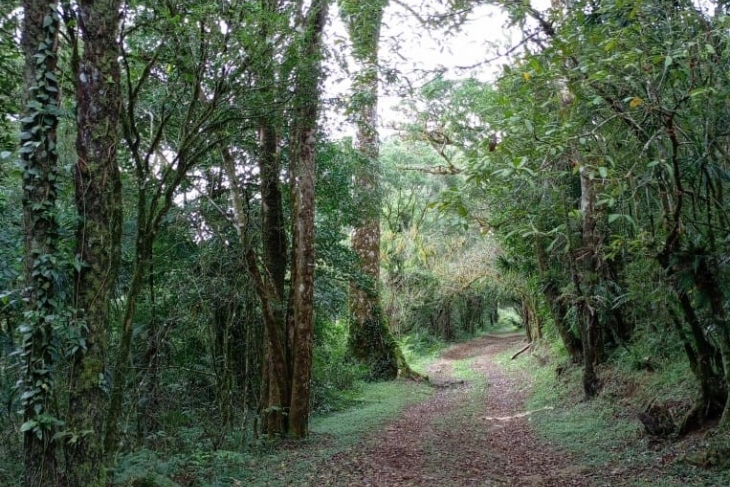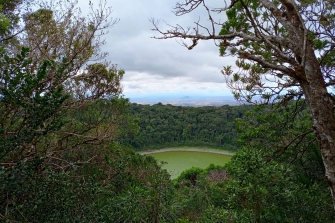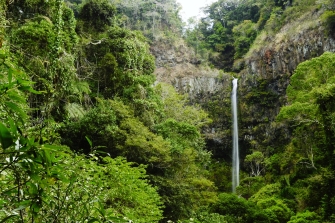Blog Detail
Blog Detail

04
Apr 2025The Amber Mountain National Park: A Natural Treasure in Madagascar
Amber Mountain National Park, located in the northern region of Madagascar, is an essential part of the island’s natural heritage. Covering a vast area of 18,200 hectares, this park stands as a protected sanctuary for some of Madagascar’s most diverse ecosystems, making it one of the island's premier destinations for ecotourism and wildlife enthusiasts. The park was established in 1958 with the primary aim of preserving its unique biodiversity, which includes a wide range of endemic species, many of which cannot be found anywhere else on Earth. For centuries, Madagascar has been a cradle for evolution, where isolated ecosystems led to the development of entirely unique species. Amber Mountain, or Parc National du Mont d'Ambre, is no exception. The park, with its cool, refreshing climate, dense rainforests, and ancient volcanic formations, offers a stark contrast to the hot, dry lowlands of the island, making it a welcoming refuge for an impressive variety of flora and fauna.
What makes Amber Mountain particularly unique is its geological history. The park is the product of volcanic activity that occurred millions of years ago, leading to the formation of dramatic landscapes such as craters, cliffs, waterfalls, and diverse terrains that shape the region’s ecosystem today. This geological diversity is what makes Amber Mountain such a special place for nature lovers and hikers alike. The terrain features steep, forested hills, volcanic craters, and lush valleys, creating a rich and varied landscape. The mountain is also home to cascading waterfalls, such as the Antomboka Waterfall, which adds to the park's allure, making it a perfect location for both peaceful exploration and more adventurous pursuits. These landscapes are not only scenic, but they also provide a habitat for rare species of plants and animals. The cool climate of the mountain supports a wide range of flora, ranging from towering trees and ferns to vibrant orchids. Visitors can often see these plants flourishing along hiking trails that wind through the park, allowing travelers to witness the astonishing variety of life that thrives in this protected environment.
In addition to its stunning landscapes, Amber Mountain is a hotspot for biodiversity. The park is home to several hundred species of plants and animals, many of which are endemic to Madagascar. The park’s birdlife is especially rich, with over 100 bird species, some of which are incredibly rare and found only in this region. Among the most notable species are the Madagascar red owl, the Madagascar blue pigeon, and the Madagascar kestrel. Birdwatchers from all over the world travel to Amber Mountain to witness these magnificent creatures in their natural habitat. The park also serves as a sanctuary for several species of lemurs, one of Madagascar’s most iconic animals. Aye-aye lemurs, black lemurs, and the white-fronted brown lemur are just a few of the many primates that call Amber Mountain home. The reptiles of the park are equally fascinating, with species like the yellow-throated chameleon and the leaf-tailed gecko being some of the most well-known. The rich plant life includes not only tropical trees but also medicinal plants that have been used by local communities for generations. This stunning biodiversity plays a significant role in making Amber Mountain National Park a vital part of Madagascar’s environmental landscape, and it highlights the importance of preserving these ecosystems for future generations.
Biodiversity and Natural Wonders: A Sanctuary for Unique Wildlife

Amber Mountain National Park is often described as a biodiversity hotspot, and for good reason. This rich diversity is not only due to the variety of species found within the park but also because many of these species are endemic to Madagascar, making them incredibly rare and often vulnerable to extinction. The unique ecosystems found here represent some of the last remaining pristine forests in Madagascar. The park is home to an array of plants and animals that have evolved in isolation over millions of years, resulting in species that are found nowhere else on Earth. In fact, a significant portion of the wildlife in Amber Mountain is endemic, meaning it is unique to this region. The park’s tropical rainforests are home to species that have adapted to the cool and misty conditions of the highlands, offering a fascinating glimpse into the evolutionary processes that have shaped Madagascar’s natural world.
For bird lovers, Amber Mountain offers a truly exceptional experience. Among the 100-plus species of birds found within the park, several are endemic and hold significant conservation value. The Madagascar red owl, for example, is an elusive species that has attracted considerable attention from ornithologists and nature enthusiasts alike. The Madagascar blue pigeon and Madagascar kestrel are other notable species that can be spotted in the park’s forests. The park’s rich birdlife makes it an ideal location for birdwatching, with the dense vegetation providing a perfect environment for these unique species to thrive. In addition to the birdlife, the park is also home to a variety of reptiles, amphibians, and other creatures, many of which are endemic to Madagascar. The leaf-tailed gecko, a master of camouflage, and the vibrant yellow-throated chameleon are just two of the many reptiles that can be observed in the park’s forests. These reptiles are particularly fascinating because of their vibrant colors and unique adaptations that help them survive in the wild.
Ecotourism and Conservation Efforts

As one of Madagascar’s most important ecological sites, Amber Mountain National Park plays a crucial role in conservation. Efforts to preserve the park's unique ecosystems are supported by ecotourism, which not only benefits the local economy but also educates visitors about the importance of conservation. Local communities, including the Bara and Sakalava people, are actively involved in the park’s management, serving as guides and helping to maintain sustainable tourism practices. Through responsible tourism, visitors can enjoy the natural wonders of Amber Mountain while contributing to its preservation. The park’s protection is vital not only for the conservation of Madagascar’s endemic species but also for maintaining the ecological balance of the island. With continued efforts in both research and education, the park is a shining example of how ecotourism can play a positive role in environmental protection and community development.